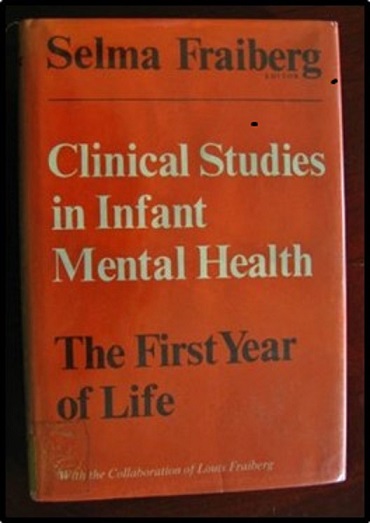EMPATHY - 5 ARTICLES (2014-2016, updated 2025)
Date added: 27/05/22
Download a Free PDF of the 5 articles
EMPATHY ARTICLES - due to interest in my articles (and Ariel Nathanson's) on empathy, I have put all five together. The complete articles can be downloaded in one PDF at the bottom of the page. Below I have added the five titles and the introductory paragraphs to each.
1
IS THE CAPACITY FOR EMPATHY THE KEY QUALITY IN OUR WORK WITH TRAUMATIZED CHILDREN? – PATRICK TOMLINSON (2014)
 One of the first things I learned in working with traumatized children, is that the Capacity to Empathize marks a critical stage in a child’s development. The children and young people, who were placed with us often had no or little capacity for empathy. However, this didn't mean they didn't have the potential to develop it. The development of empathy was one of the central aims of our therapeutic work, as it is for many of us that work with and look after children.
One of the first things I learned in working with traumatized children, is that the Capacity to Empathize marks a critical stage in a child’s development. The children and young people, who were placed with us often had no or little capacity for empathy. However, this didn't mean they didn't have the potential to develop it. The development of empathy was one of the central aims of our therapeutic work, as it is for many of us that work with and look after children.
We carried out a needs assessment on each child to determine his stage of development, how it had been disrupted by trauma, and how his developmental needs could be met. Dockar-Drysdale’s (1970, p.98) Need Assessment, described empathy,
"…as being the capacity to imagine what it must feel like to be in someone else’s shoes, while remaining in one’s own."
From infancy onwards, the consequence of not being able to recognize another person, as a separate being with their own emotions, thoughts, and needs, causes havoc in daily living. It can also be dangerous as the child has no conscious sense of hurting others and has little if any remorse.
2
'GHOSTS IN THE NURSERY’ – A POWERFUL EXAMPLE OF EMPATHY IN THE WORK WITH A MOTHER AND BABY – PATRICK TOMLINSON (2014)
 Since writing my last article on empathy I found a book, which included a paper that had a big impact on my learning in the 1990s. I had lost the book, and after a while, it turned up on Amazon ‘used and new’. The paper was by Selma Fraiberg et al. (1980), ‘Ghosts in the Nursery: A Psychoanalytic Approach to the Problems of Impaired Infant-Mother Relationships’.
Since writing my last article on empathy I found a book, which included a paper that had a big impact on my learning in the 1990s. I had lost the book, and after a while, it turned up on Amazon ‘used and new’. The paper was by Selma Fraiberg et al. (1980), ‘Ghosts in the Nursery: A Psychoanalytic Approach to the Problems of Impaired Infant-Mother Relationships’.
The paper is about working with mothers and their babies (sometimes fathers too). The babies were in major peril, almost needing to be removed for their safety. The main thrust of the paper is that unresolved issues from the mothers’ conflicted pasts were preventing them from parenting their babies. The way forward was to work with the mother’s unconscious pain, through empathic understanding – to enable her to be in touch with her feelings. This would then reduce the risk of the mother’s history being re-enacted with her infant. It is a great example of why early intervention is so important. Here are a few excerpts that beautifully illustrate the quality of work, with my comments in-between,
"In every nursery there are ghosts. They are the visitors from the unremembered past of the parents, the uninvited guests at the christening. Under all favorable circumstances the unfriendly and unbidden spirits are banished from the nursery and return to their subterranean dwelling place. The baby makes his own imperative claim upon parental love and, in strict analogy with the fairy tales, the bonds of love protect the child and his parents against the intruders, the malevolent ghosts." (p.164)
3
EMPATHY AND THE WOUNDED HEALER
PATRICK TOMLINSON (2014)

The concept of the Wounded Healer was first explained to me by Olya Khaleelee. Olya is a corporate psychologist and organizational consultant. I had the privilege of working with her on assessing people’s suitability for working with traumatized children. The links between a person’s history and personality, and how this might interact with the work were the key part of the assessment. Her reference to the wounded healer was an acknowledgement that emotional wounds might be a part of what enables a person to become a healer. Our assessments enabled us to make a judgement as to whether this was likely to be the case or not.
The term wounded healer goes back to Greek mythology. The Greek god Chiron was wounded by a poisonous arrow. He could not die due to his divine ancestry. In agony, he roamed the earth healing the injured and sickly. Similar stories and fables can be found in Christian, Jewish, African and Moslem cultures. In the relational sciences, Carl Jung is attributed to be the first to use the term wounded healer. In 1951 Jung suggested that sometimes suffering a disease was the best training for a physician. Therefore, only a wounded physician could treat disease effectively.
4
IS EMPATHY ON THE DECLINE?
ARIEL NATHANSON (2016)

This article fits well within my series of articles on Empathy. Ariel brings to attention the complex factors interrelated with empathy and how it influences our actions. His views build upon the work of the famous social psychologist Stanley Milgram in the 1960s. It is possible to be capable of empathy and also carry out harmful acts. This is a challenge to all of us because we might all struggle to act in an empathic way under certain conditions. A key question for me, which is also highlighted by Ariel is this – Is the capacity for empathy on the decline or is it just more difficult to show it?
As Ariel will show, we also need to be careful in our assessments and judgements regarding the actions of a child or young person. In this respect, Ariel’s article shows a great deal of empathy for the complex situations that influence the actions of the young people he works with. It also raises some important questions about our contemporary cultures and issues such as the use of social media. Thank you, Ariel.
Postscript: On the same theme as this article, Ariel Nathanson has since Co-Edited the following book,
Nathanson, A., Music, G. and Sternberg, J. (Editors) (2021) From Trauma to Harming Others: Therapeutic Work with Delinquent, Violent and Sexually Harmful Children and Young People, London and New York: Routledge
5
IS EMPATHY ALWAYS A GOOD THING?
PATRICK TOMLINSON (2016)
 In thinking about the four previous articles on empathy, it seemed to me that there is an important question that I haven’t discussed. This is whether empathy is always useful and when might it not be? Ariel has also discussed this in the previous article.
In thinking about the four previous articles on empathy, it seemed to me that there is an important question that I haven’t discussed. This is whether empathy is always useful and when might it not be? Ariel has also discussed this in the previous article.
Empathy has had such positive press in recent times, that it may even seem foolish to question its value. However, some do, and a balanced perspective is helpful. Paul Bloom, psychologist and Yale Professor is one such person. He claims that empathy can blind people to the long-term implications of their actions. His book on the subject is titled, Against Empathy: The Case for Rational Compassion. As I have discussed, I was introduced to the concept of empathy by the child psychotherapist Barbara Dockar-Drysdale. She included a question on empathy in a needs assessment for children whose development had been disrupted by neglect and trauma.
She referred (1970, p.98) to empathy as, “a capacity to imagine what it must be like to be in someone else’s shoes, while remaining in one’s own”. The ‘remaining in one’s own’ is a vital part of the definition. This means that there is a sense of separation. The person empathising recognizes that the other person’s experience and feelings are not the same as one’s own. Identifying with the other does not mean taking on his feelings as if they are one’s own. This requires a level of maturity and personal integration.
Files
Please leave a comment
Next Steps - If you have a question please use the button below. If you would like to find out more
or discuss a particular requirement with Patrick, please book a free exploratory meeting
Ask a question or
Book a free meeting













